SLIDES (Link to watch video follows these slides):
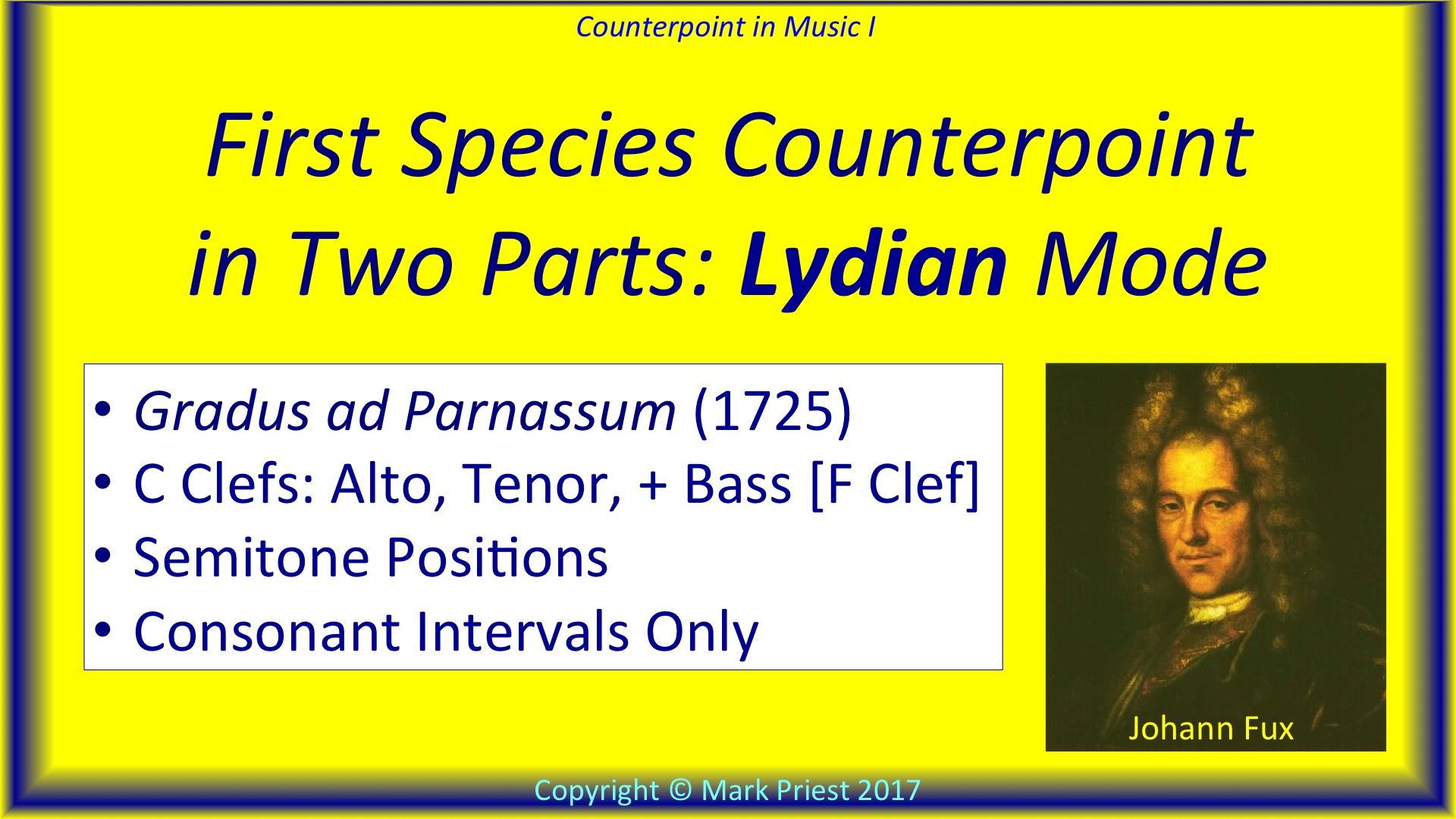Greetings, Everyone! Welcome to our ongoing exposé on *Gradus ad Parnassum*, by Johann Fux’. That Latin treatise, published in 1725, is **PUBLIC DOMAIN** in our day – copyright-free.
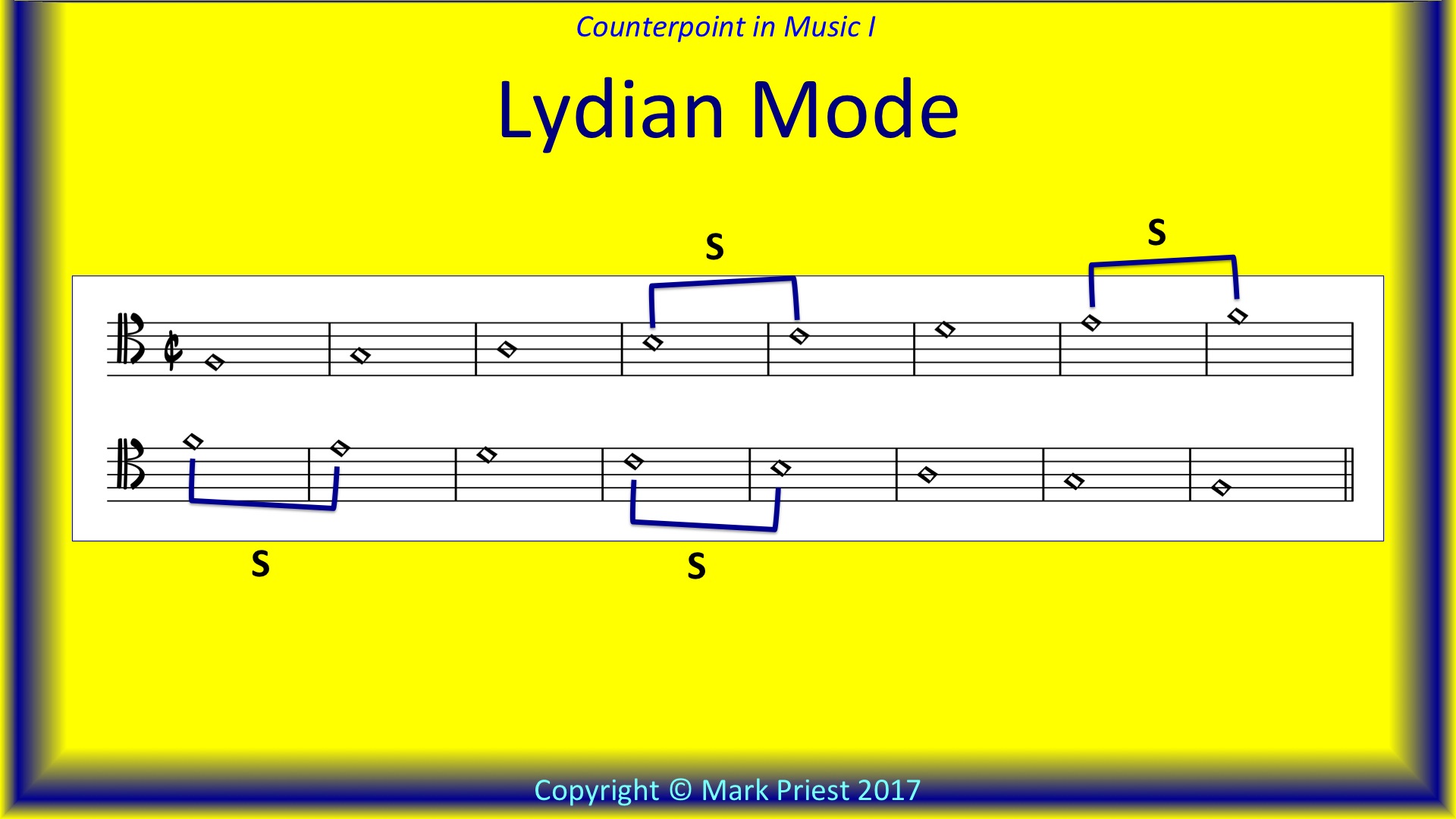
Our next example of Two-Part, First Species Counterpoint, moves the Final of the *Cantus Firmus* [CF] to the note F, popularly referred to as **“Lydian Mode.”** Observe [above] the new location of the semitones: between scale degrees 4-5, and 7-8.
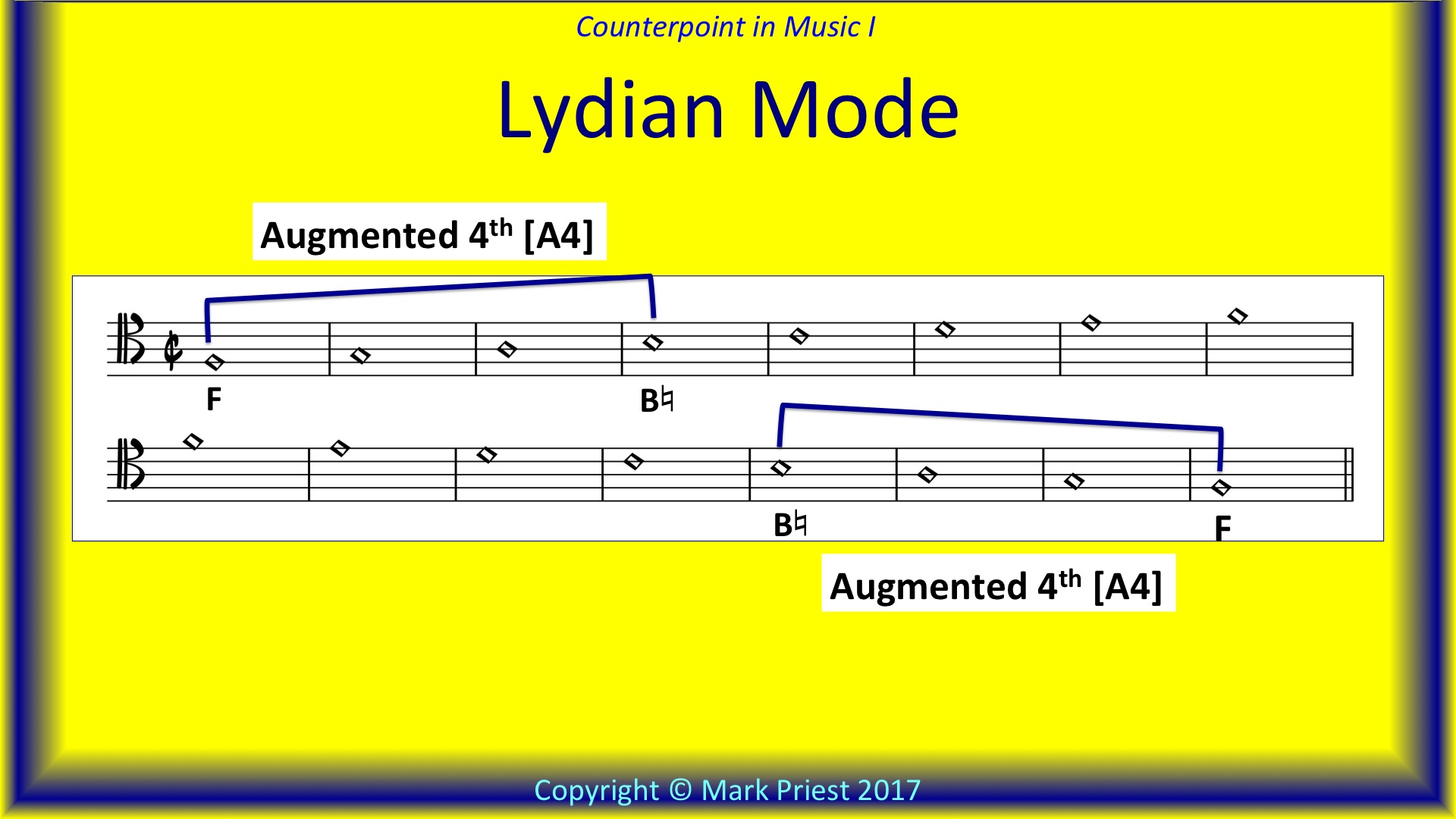
Let’s examine this “Lydian” scale, ascending and descending. One of three major modes, the Lydian sound is distinguished by its **raised fourth scale degree**, making it even more “major” than the ordinary “major” scale. Let’s listen!
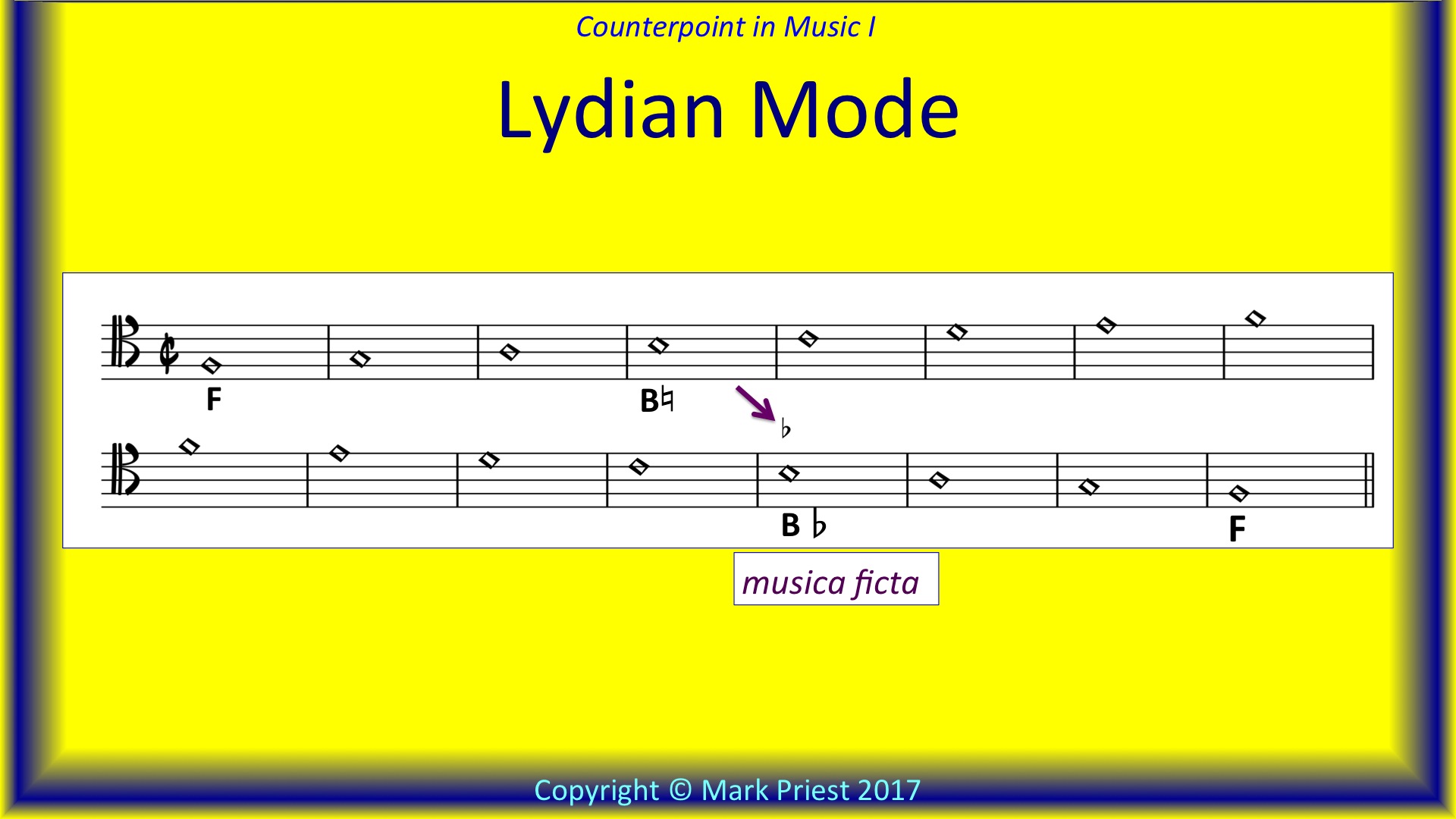
Bear in mind that the fourth degree of Lydian mode allows for an optional *musica ficta* – that’s the accidental above the note B. When applied, the *musica ficta* effectively converts Lydian into an ordinary major scale. You will often hear that subtle change in the descending direction.
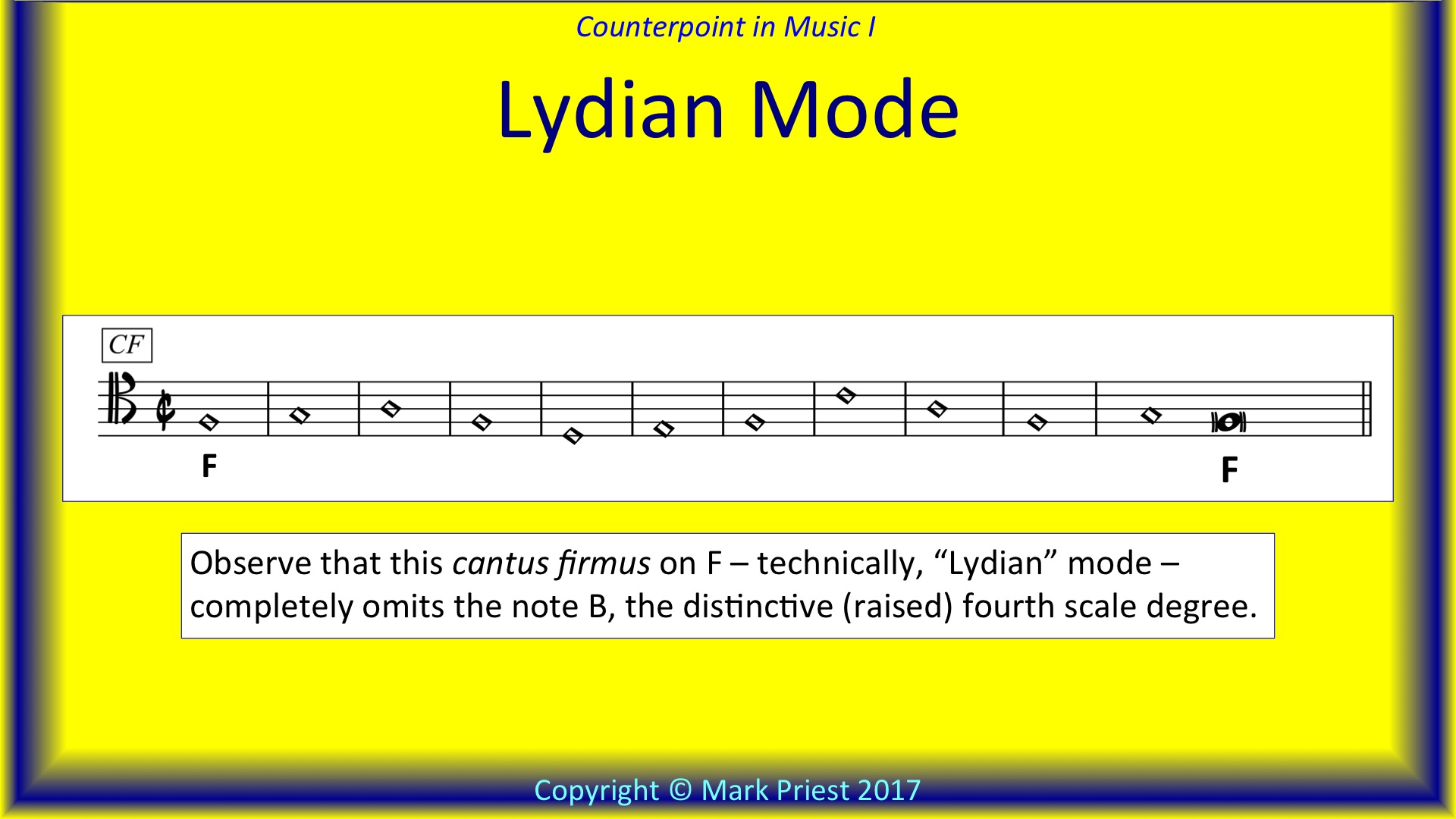
Next, let’s have a listen to a CF in the mode that we today might call “Lydian.” Interestingly: In *Gradus ad Parnassum*, the CF starting on the note F completely avoids using the 4th scale degree (and the author does not employ the word “Lydian” either).
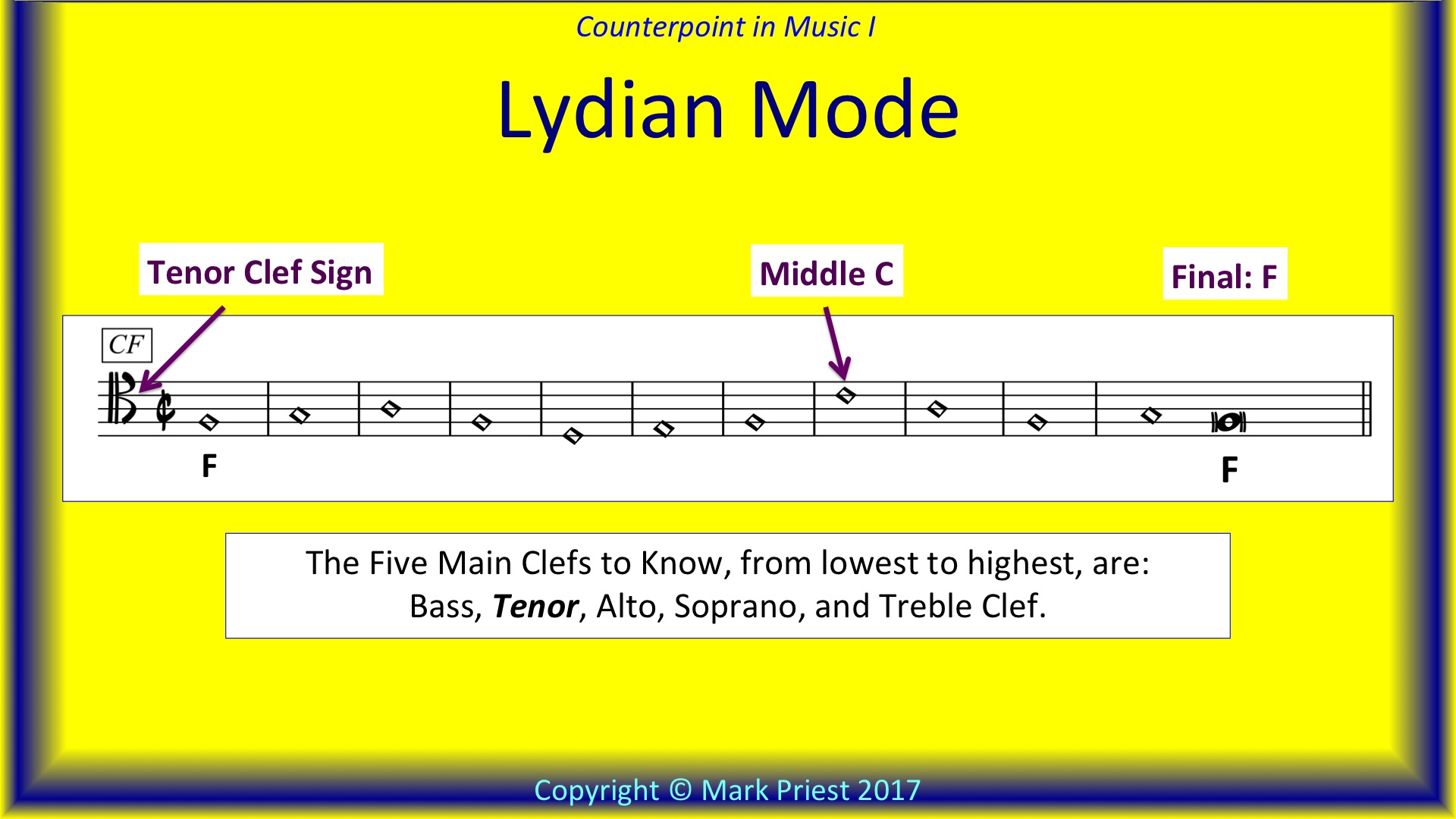
If you are wondering which C-clef we are using there, that is a **Tenor clef** sign. You should know all clef signs. That includes the Tenor, in which the note Middle C is the 4th line of the staff. The note F, a 5th below middle C, is the starting note and Final of our Lydian Mode.
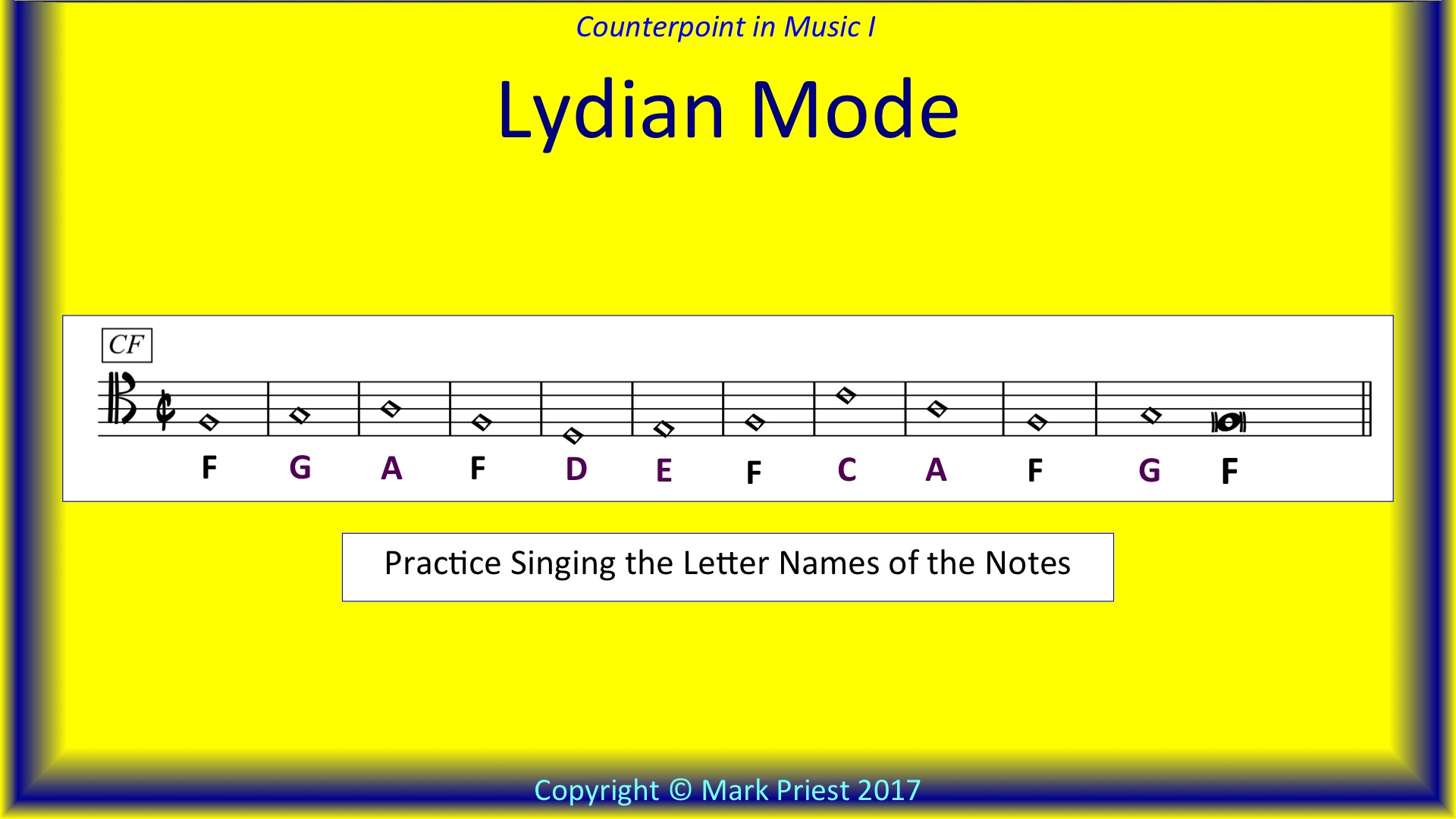
The letter names of the notes are here labeled. Practice singing the letter names along with the recording. Ready? [mus]
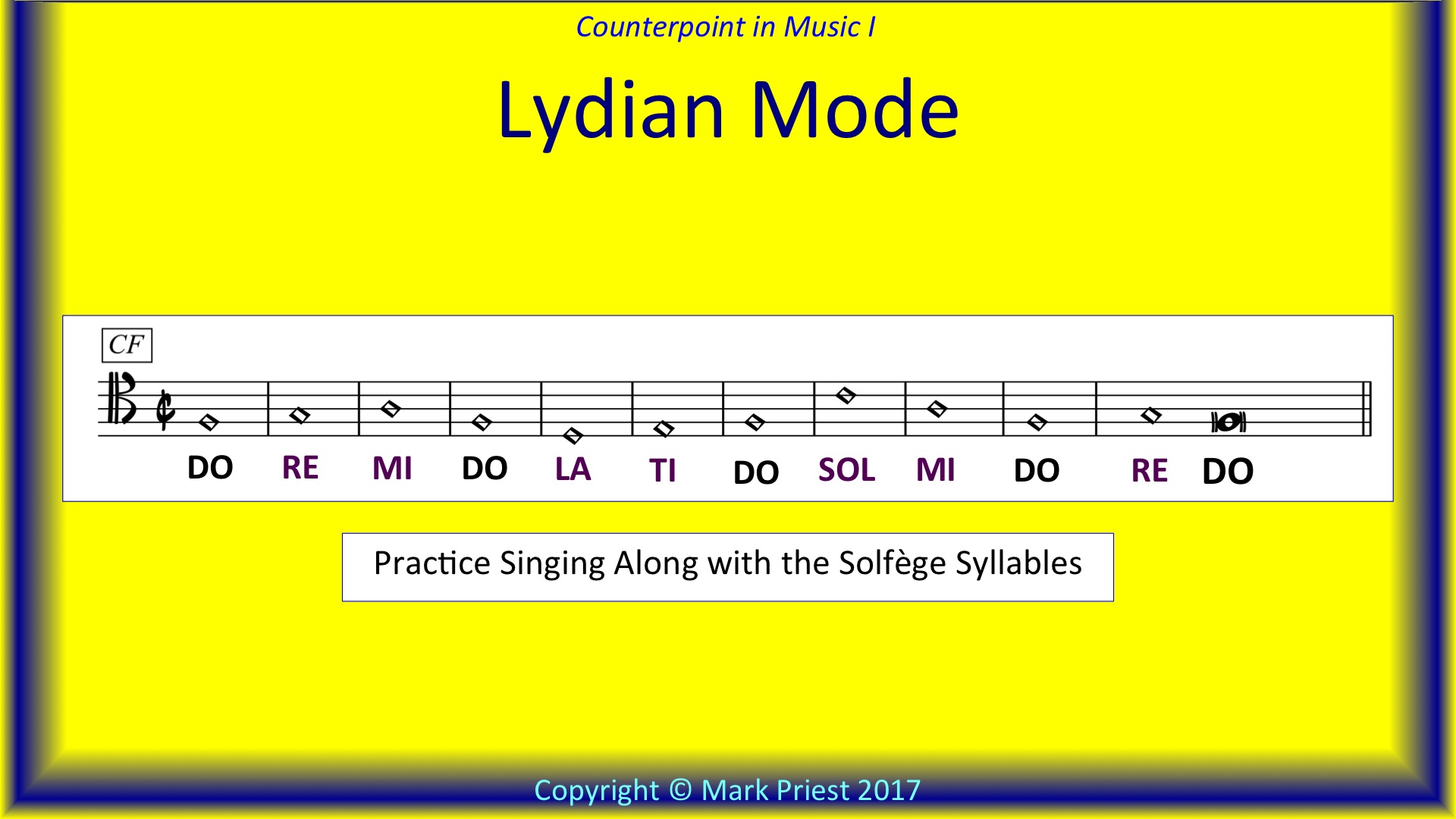
Lydian is a major mode. Therefore, movable *solfège* singers should sing with the note F as the DO, the tonic pitch. Try singing along with the recording, in *solfège*, as shown here. Ready? [mus]

For the **Upper Counterpoint**, we use the next higher clef: **Alto**. Associating nearby clefs together also makes it easier to see the distinction between *simple* and *compound intervals* – i.e., the octave-plus intervals. [mus]
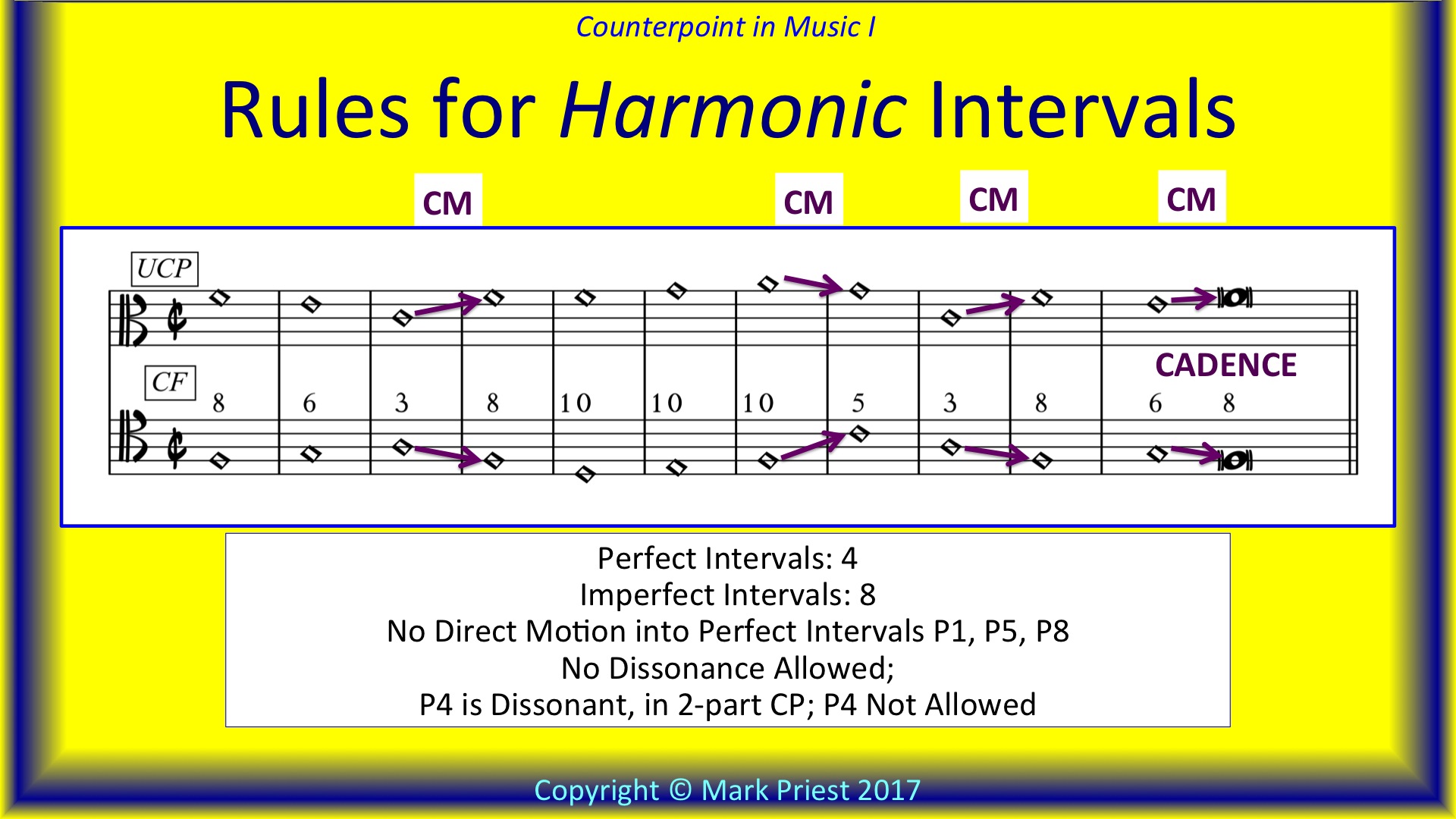
You’ll notice that the Rules for harmonic intervals still apply. Reading off the list: Vertical intervals between the two parts must be **consonant**, and a P4 is forbidden as a dissonance. Harmonic intervals should be mostly of the imperfect type – and P1s are not permitted at all in the middle. **Similar and parallel motion** going into a *perfect* interval are **not allowed**, but **contrary and oblique motion** are usually okay. An **UCP** must cadence on a P8 at the end, preceded by a Major 6th; in Minor Modes the seventh scale degree may be raised a chromatic semitone. Repeated tones are not allowed in the CF, but a single repeating note is allowed in the CP.
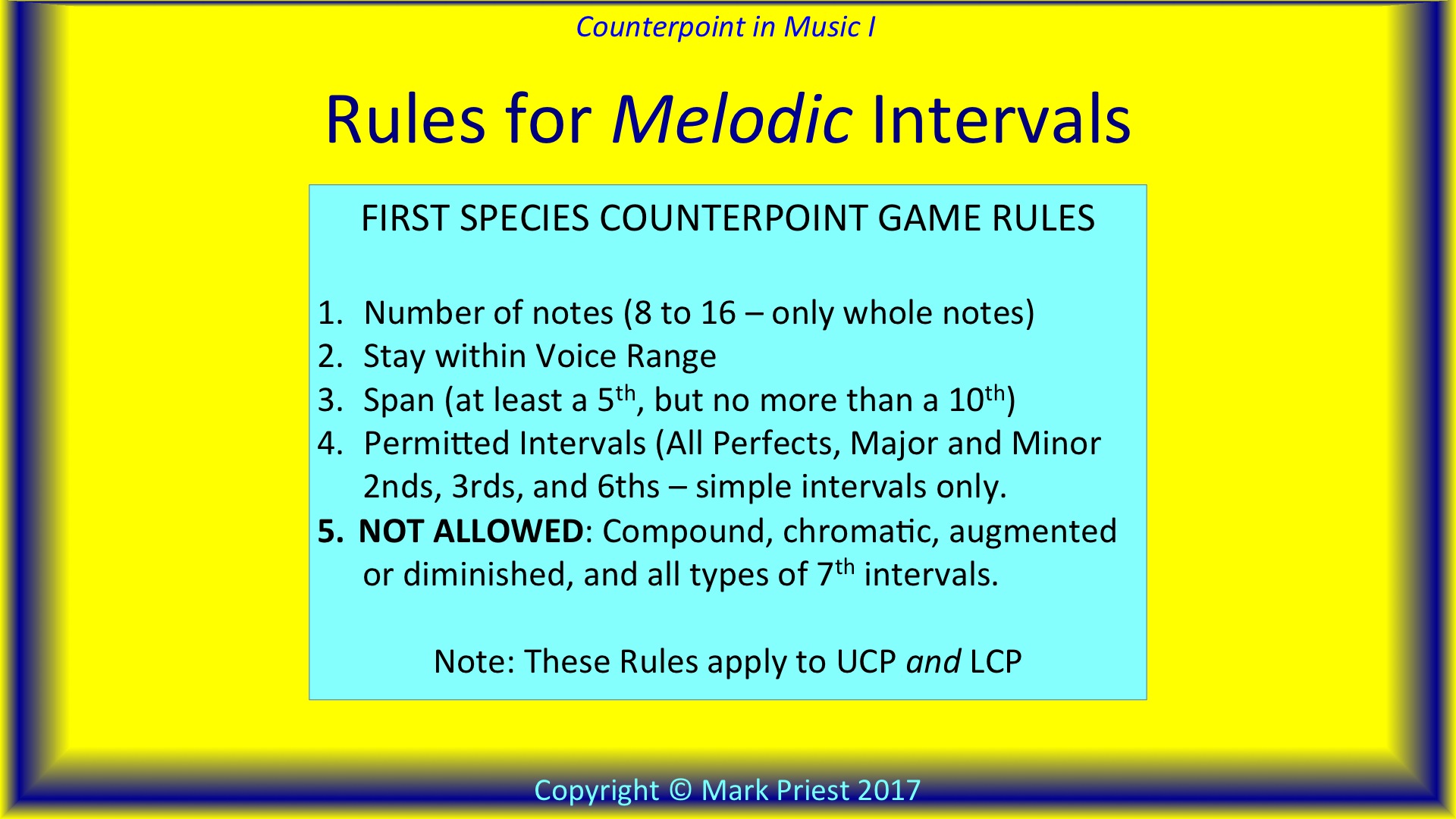
Rules for *Melodic* Intervals, regarding length, voice range and span, permitted and forbidden intervals still apply as well. Note: **Compound, chromatic, augmented, diminished**, and any **7th intervals are NOT allowed**, in either UCP or LCP.
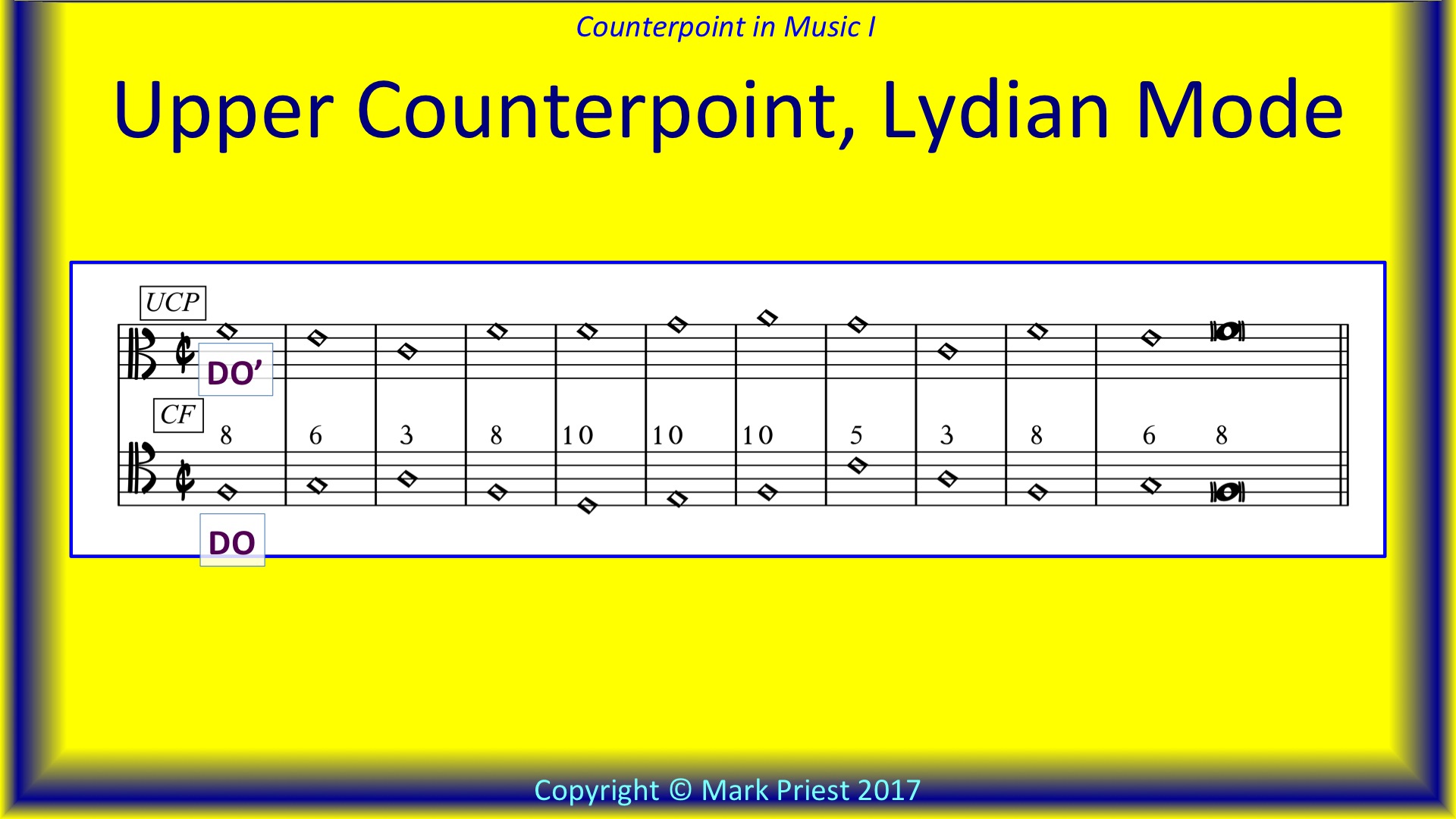
As we have already seen, the UCP solution found in *The Gradus* looks like this; but do you see or hear any breaking of the Rules just reviewed? [mus] For practice, you should also decode the *solfège* of both parts, and sing them with a fellow student. Now, on to the **LCP!**
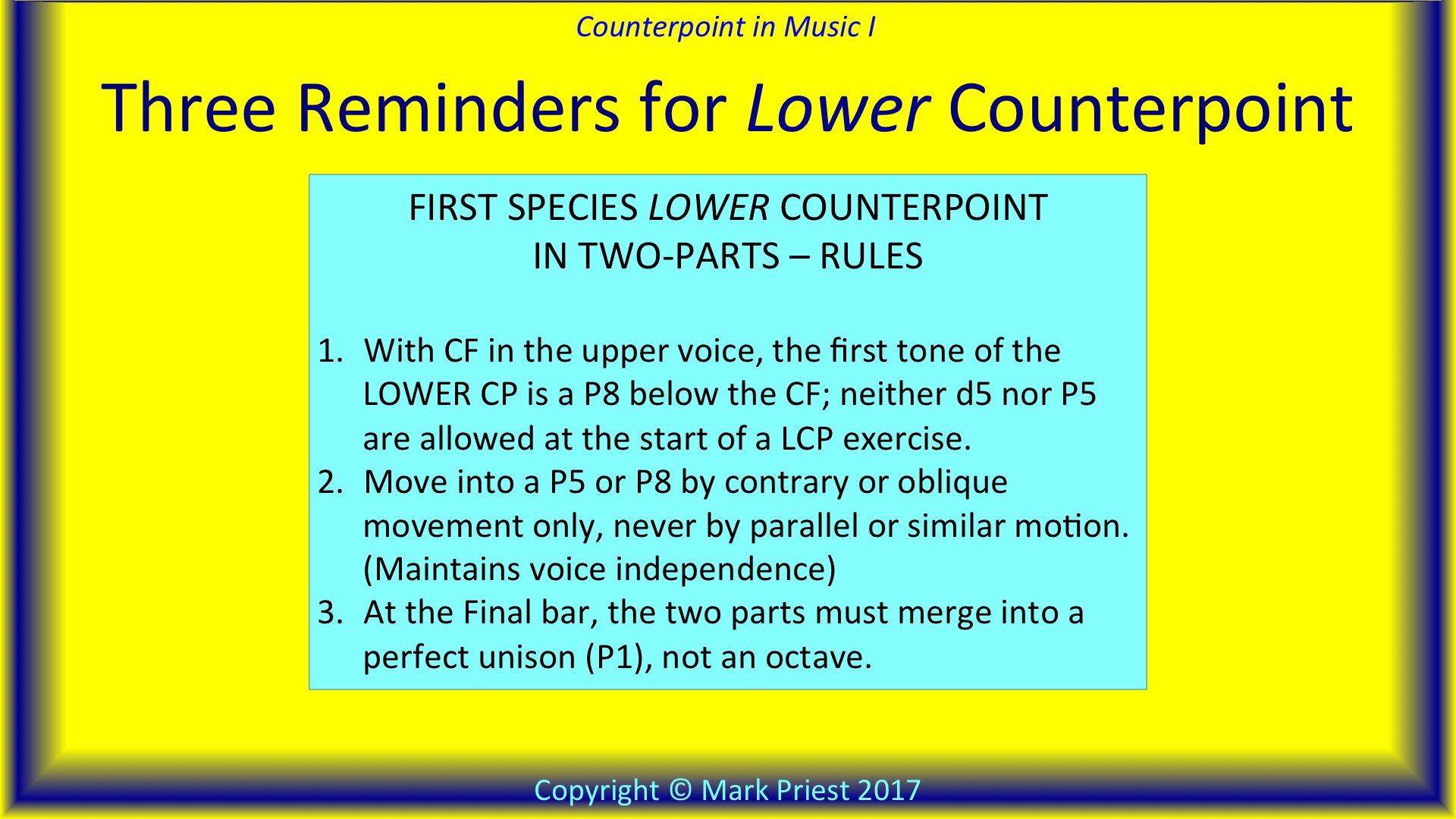
When the CP is the upper voice, it may begin at either the P5 or P8 above the CF. Not so when the CF is the top voice! A LOWER CP may only begin at the P8 below; neither d5 nor P5 below are allowed, for reasons discussed earlier. Moving directly into a P5 or P8 is also not permitted – voice independence requirement – and at the Final bar, the two parts merge into a perfect unison, not an octave.
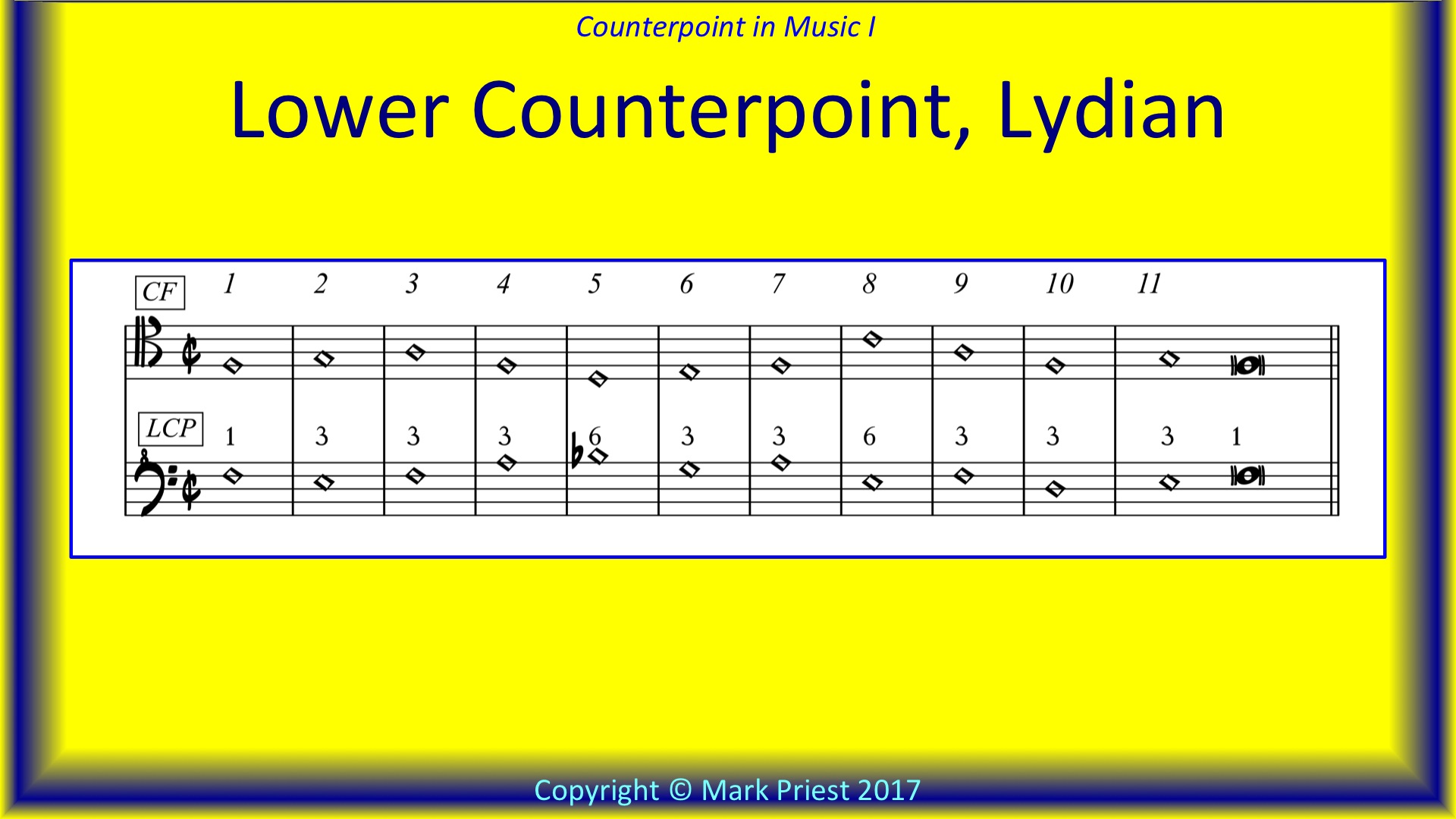
The Lydian CF is in the Tenor voice, now on top, and we add a LCP in the **Bass Clef** staff below; in these exercises, we again write neighboring voices with adjacent clefs. You are welcome to transcribe the top part to a treble or bass clef staff, if you wish.
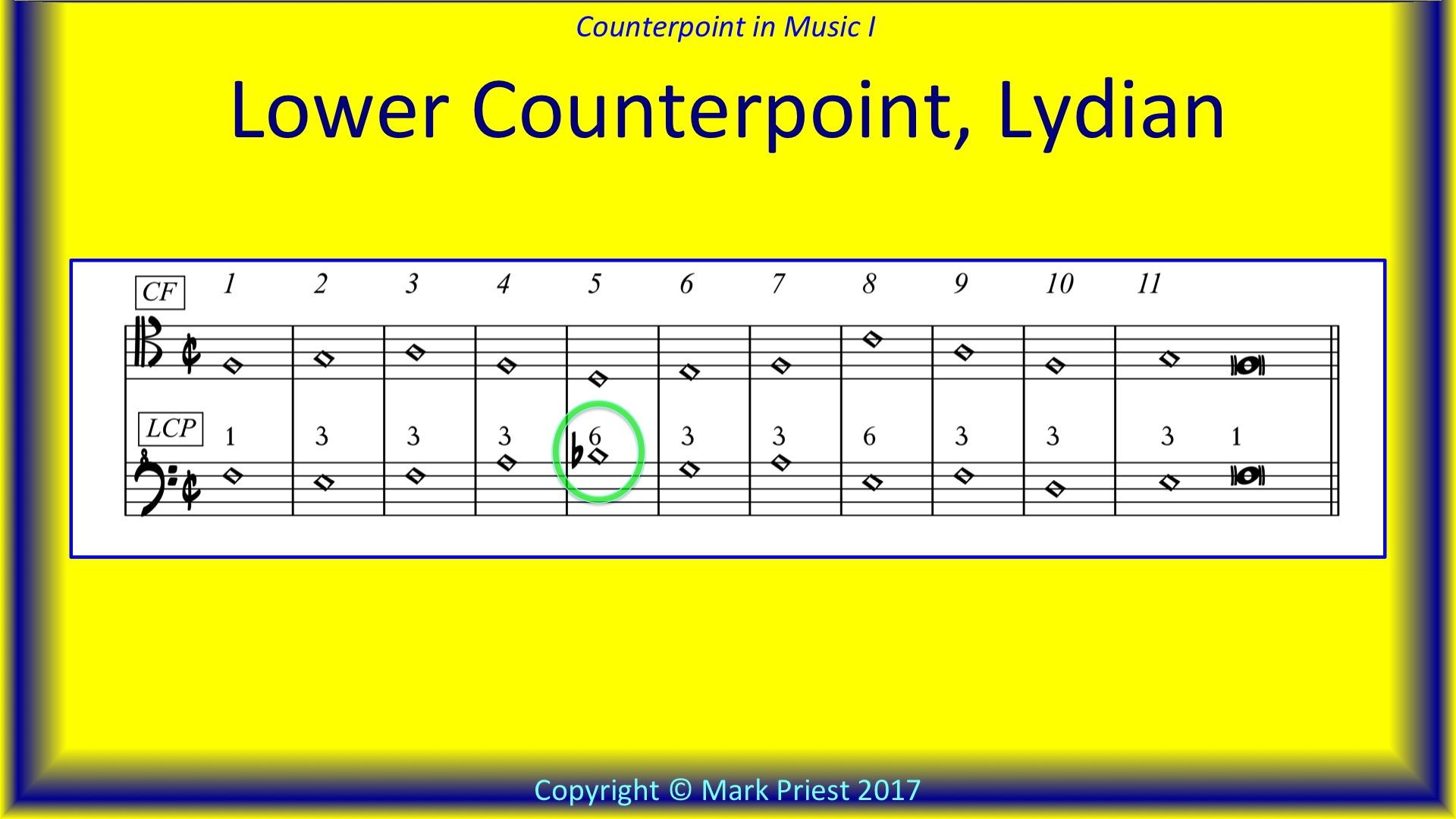
Now this is interesting. In bar 5 of the LCP, there is a B-flat. Can you think of any reasons for this added accidental? If you can, post your response in a comment. (See also link in description [below] to a video called *“Creating a Balanced Line.”*)
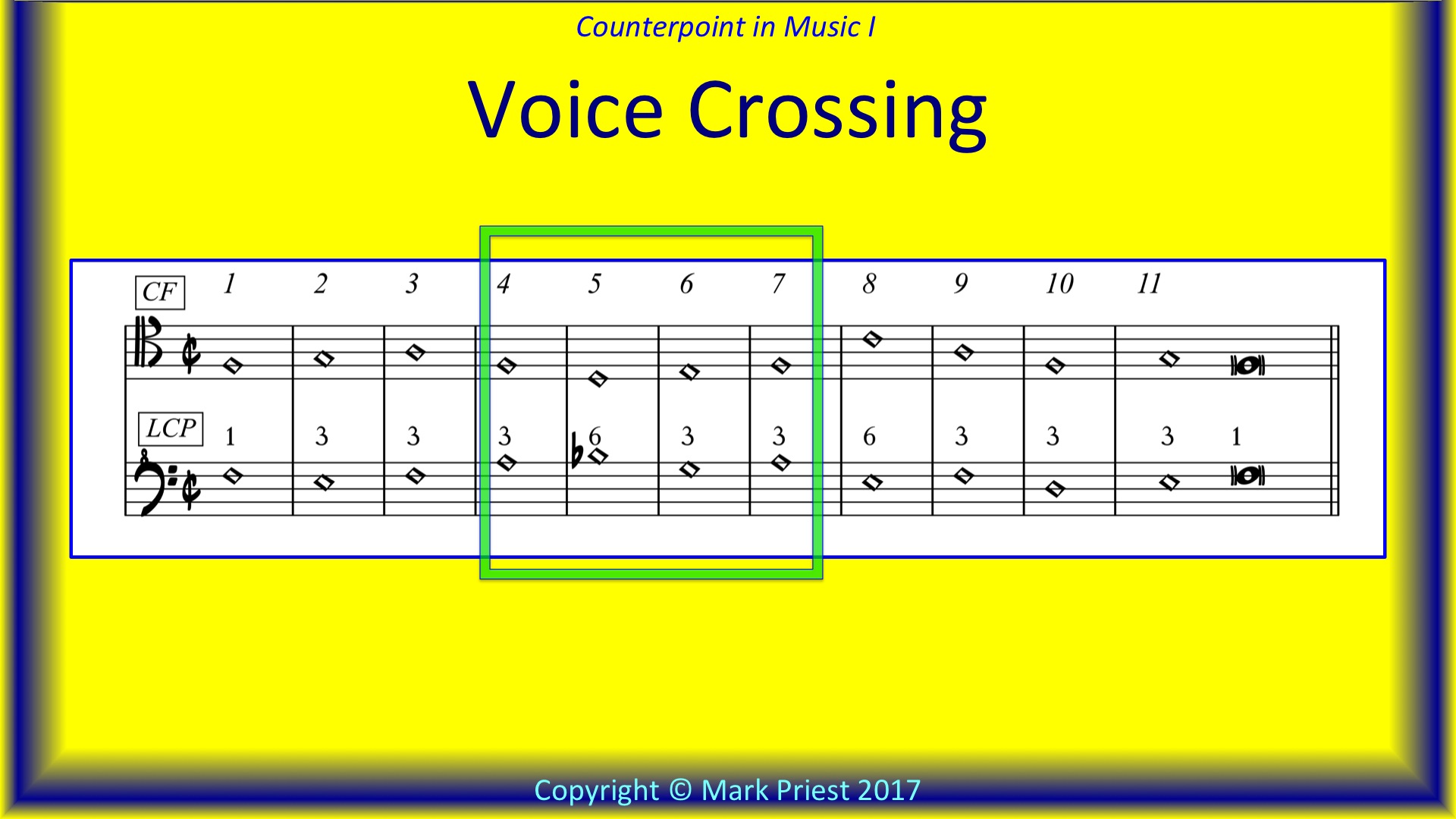
But the main attraction is bars 4 to 7, where the LCP does not remain “Lower,” but rather *crosses above the CF*. Listen! [mus] The tenor remains within its range, but why do you think it is at times allowed to dip below the bass? Don’t let this confuse you!

According to *The Gradus*: ‘Better voice leading! Otherwise, there would be way too much parallel and similar motion.’ Alfred Mann adds a footnote to the effect that, in 3- and 4-part writing, voice crossing is a valuable addition to a composer’s tool chest, so we’ll leave it at that for now. See the Description [below].

Look again at those figures written above the lower counterpoint line. They represent the vertical interval between the two parts. So for the bars of voice crossing (bars 4-7), the Tenor part becomes the *real* “bass” voice; the figures measure the interval up from whichever voice happens to be the lower of each bar. [mus]
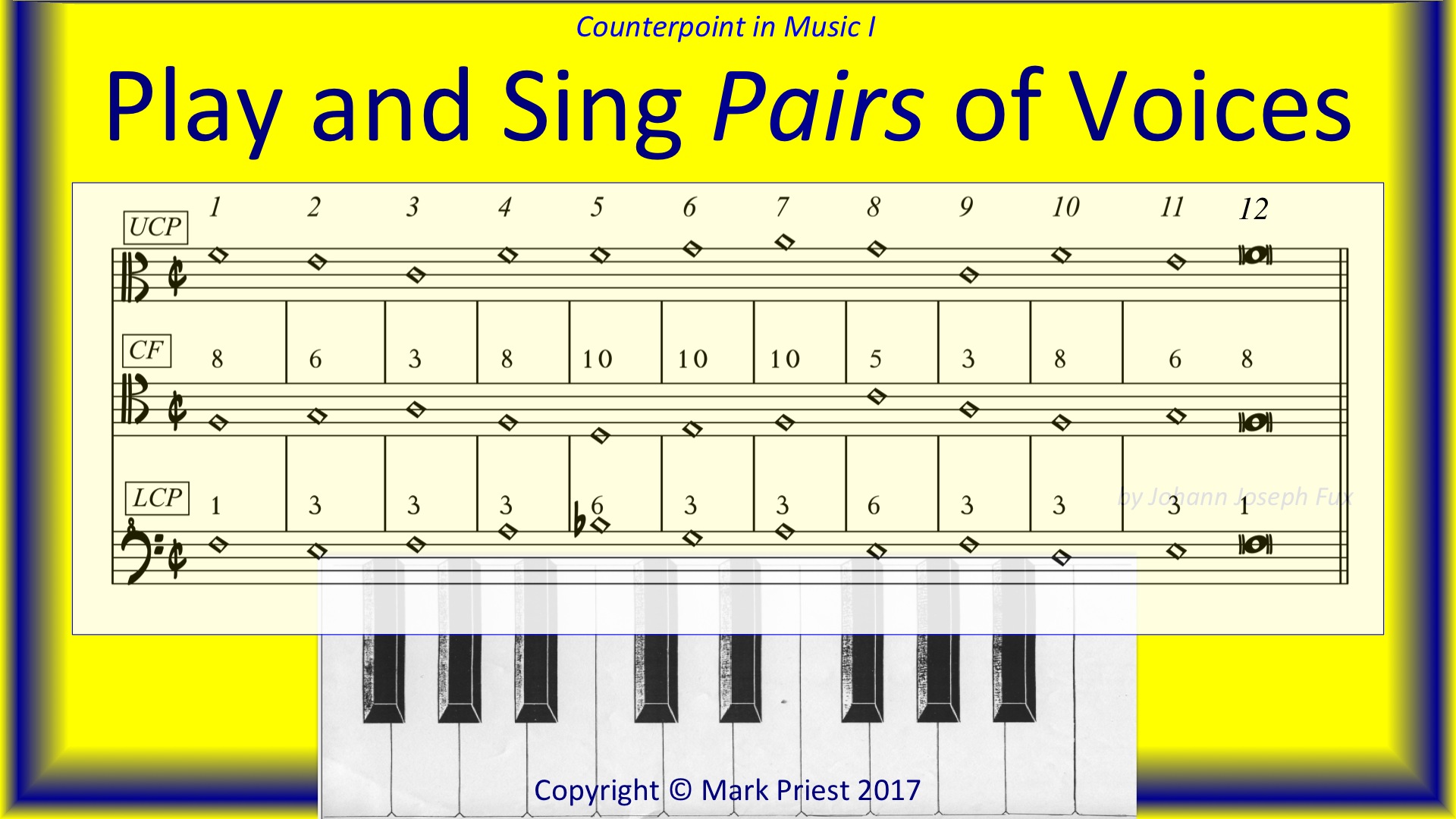
Now, wasn’t all that exhilarating! Beyond transcribing the Upper and Lower CP exercises from *The Gradus* – which you ought to copy into your personal notebook – you should try playing them through in pairs, on your piano keyboard, or perhaps singing one part while playing the other.
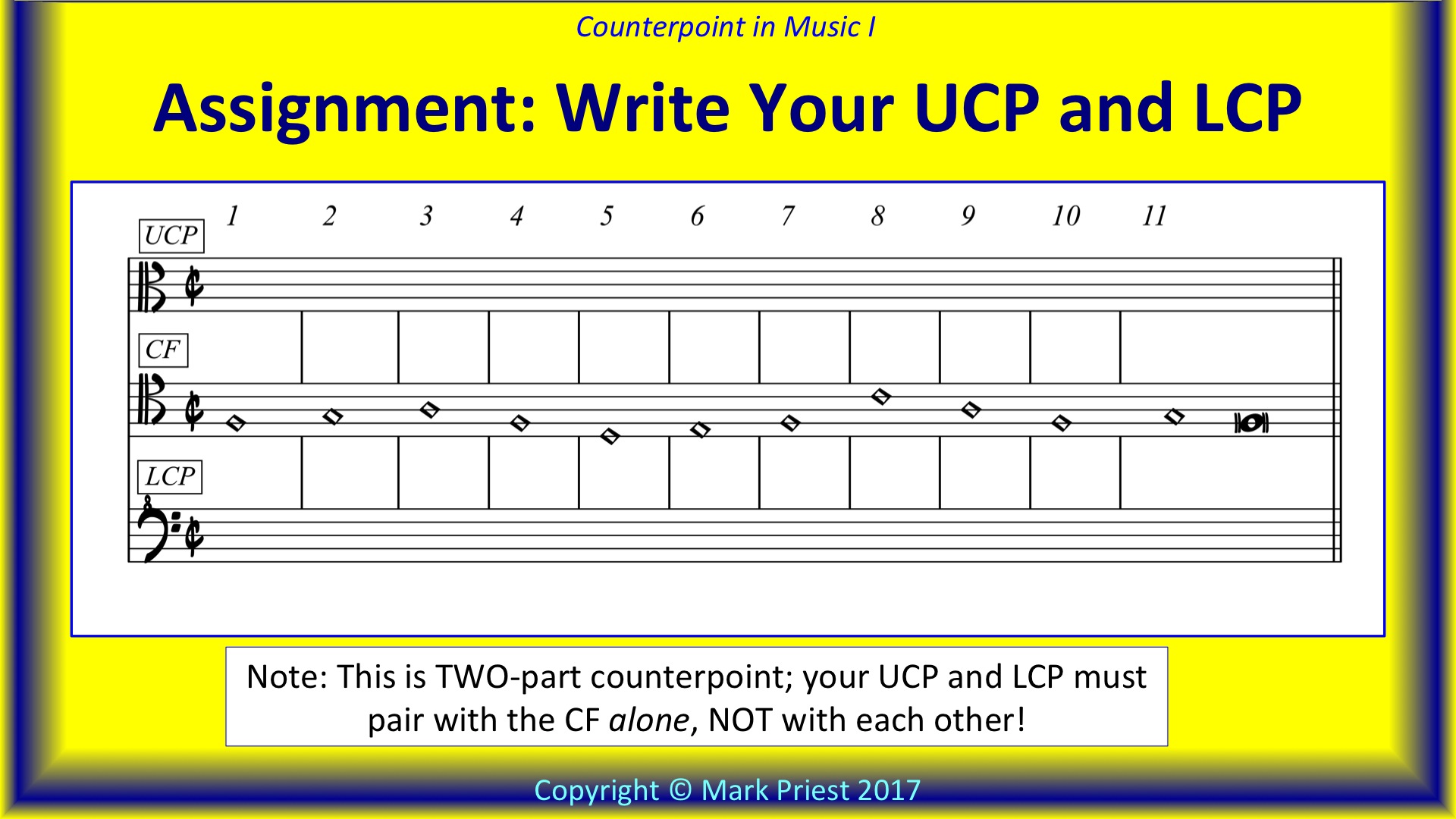
**ASSIGNMENT:** You are also invited to compose and play new and independent counterpoint lines – Upper and Lower – with the same Lydian CF in the middle. *DO NOT play all three parts simultaneously!*
Thank you for watching our videos, and upvoting, resteeming, sharing, commenting, and following.
Watch THIS VIDEO:
https://youtu.be/eaPIjEFIQHg
**Creating a Balanced Line** (Supplementary VIDEO):
https://youtu.be/71gqnW2_QGQ
**2-Part, First Species, Lower Counterpoint** (Supplementary VIDEO):
https://youtu.be/FWj6ermkIB4
*Counterpoint: From the Beginning* (PLAYLIST):
https://www.youtube.com/playlist?list=PLr9RYCj11MSw0O9yFhvRbQ9wDoDx64xhL
**IMAGES, order of appearance –**
Johann Joseph Fux, By Nikolaus Buck, Public Domain, https://commons.wikimedia.org/w/index.php?curid=186311
**WORKS CONSULTED, in Alphabetical Order by Authors’ Names**
Fux, Johann Joseph, Gradus ad Parnassum. Reprint of original, in Latin. A Public Domain work (1725)
Link: http://imslp.org/wiki/Gradus_ad_Parnassum_(Fux,_Johann_Joseph)
Mann, Alfred, *The Study of Counterpoint, from Johannes Fux’s* **Gradus ad Parnassum**. Norton: New York, 1965
Schubert, Peter. *Modal Counterpoint*.
Salzer, Felix, and Carl Schachter: *Counterpoint in Composition*. McGraw-Hill: New York, 1969.
 hiveblocks
hiveblocks